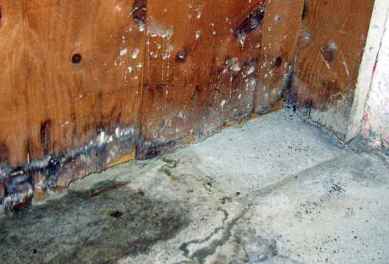Efflorescence can be found anywhere there is concrete or brick but the most common places to find this white substance is in basements hence the title of the page basement wall efflorescence it usually appears on the block walls but can also enter through mortar joints flashing cracks or absorption through porous areas in the masonry.
Pictures of white stuff growing at wood wall and concrete.
Mold can grow on many kinds of surfaces including drywall tile fabrics and even concrete.
White mold is lesser known but still an incredibly dangerous species of mold to deal with.
White mold may grow on wood due to various causes from humidity to leakage problem.
This is why it s less common to see mold growth on base trim after a flooding event.
With that said we ve learned quite a bit about white mold in our many years of mold inspection and removal.
Moisture problems can occur in areas where rainfall is heavy and drainage is insufficient.
On concrete basement floors a problem with moisture rising up from the wet ground can cause a fuzzy white mold to grow on the surface.
When the water evaporates it leaves behind the visible white stuff which many homeowners mistake for mold.
It can be just a white powder on your concrete salt like crystals white fuzzy stuff or what looks like white stalactites growing on your concrete wall.
White mold tends to grow in high humidity environments rather than areas suffering from total saturation.
Wood is one of white mold s favorite habitats just like its outdoor counterpart.
Is it dangerous how to remove it.
What is that white stuff on your concrete or masonry block wall.
These white deposits happen when water is drawn out of a cementious material.
It is called efflorescence.
The appearance of white mold on wood can reduce the aesthetic and spread health risk.
As the water wicks up from the ground through the concrete it carries with it dissolved salts.
Efflorescence is a white salt deposit commonly seen on concrete floors.




























